DIY greenhouse designs that will look amazing in your garden
Nifty and thrifty inspiration for DIY greenhouse designs for growing perfect blooms and tasty vegetable crops
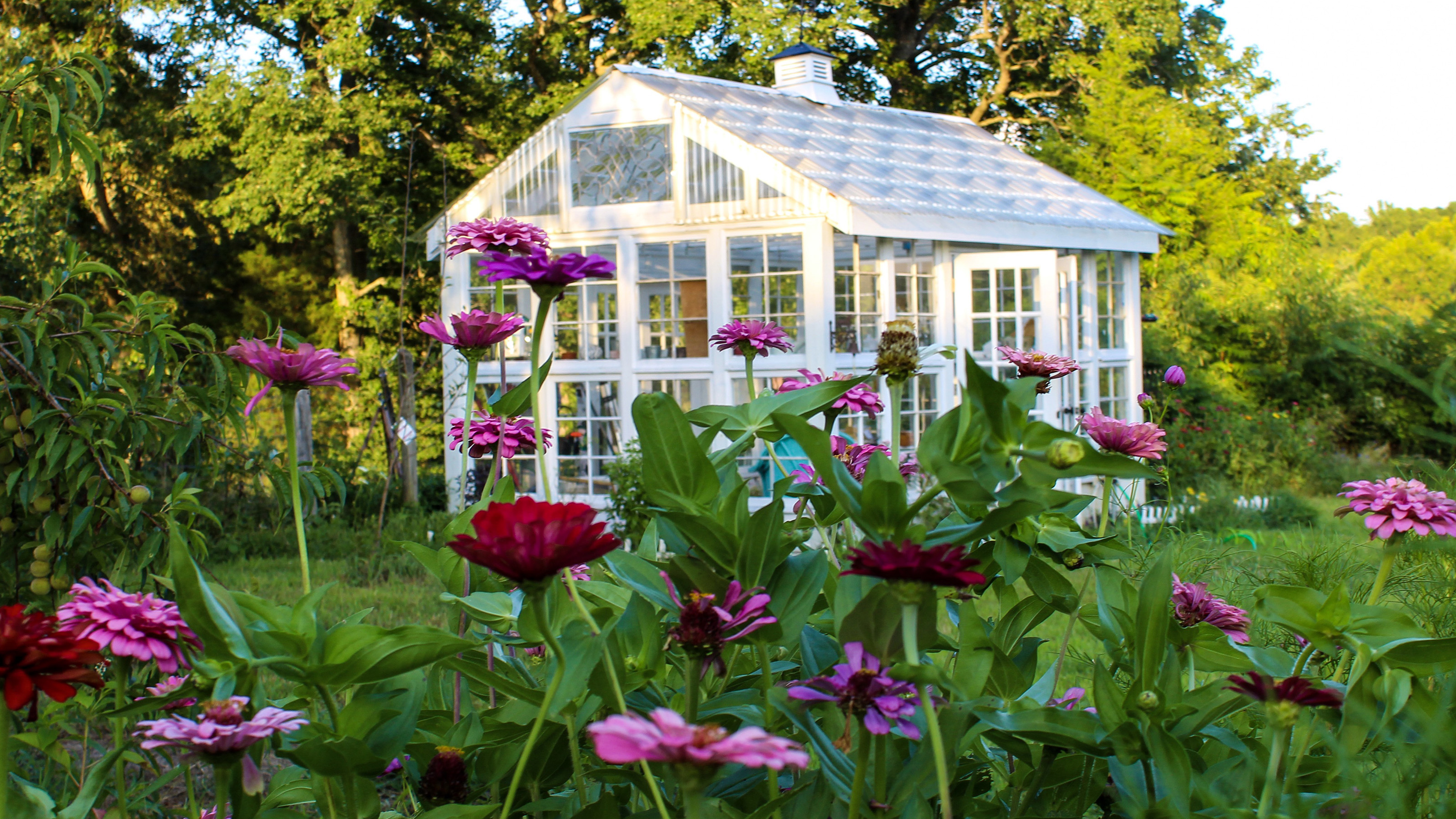

A beautiful covered growing space needn’t cost big bucks. DIY greenhouse designs are fun to build and can look just as stunning as the most ornate and expensive models. The perfect way to give your plot personality and a truly individual feature, these warm and protected grow houses will quickly become the hub of your garden.
Ideal for raising seedlings, sheltering tender plants from the elements and growing exotic crops that would struggle to survive outside – the benefits are huge and will always repay the effort in building them.
Whether you are looking to construct a large walk-in structure where you can spend time nurturing crops and sowing seeds or a smaller grow zone for a specific tender plant, there are plenty of materials and construction techniques to investigate. What’s even better, is that with a little creativity you can build an extraordinary greenhouse for very little cost.
Reclaimed materials such as old windows, glazed doors, scaffolding poles and trellis panels can all be used and will all bring their individual characteristics to the project too. While inexpensive items such as plastic sheeting, rigid polycarbonate panels, bubble wrap and bamboo canes can all make highly effective structures.
14 cheap and cheerful DIY greenhouse designs
Raise and enjoy the blooms and crops you dream of with these simple build-your-own greenhouse ideas, from large structures to a mini design for urban gardens.
1. Modify a run-down shed
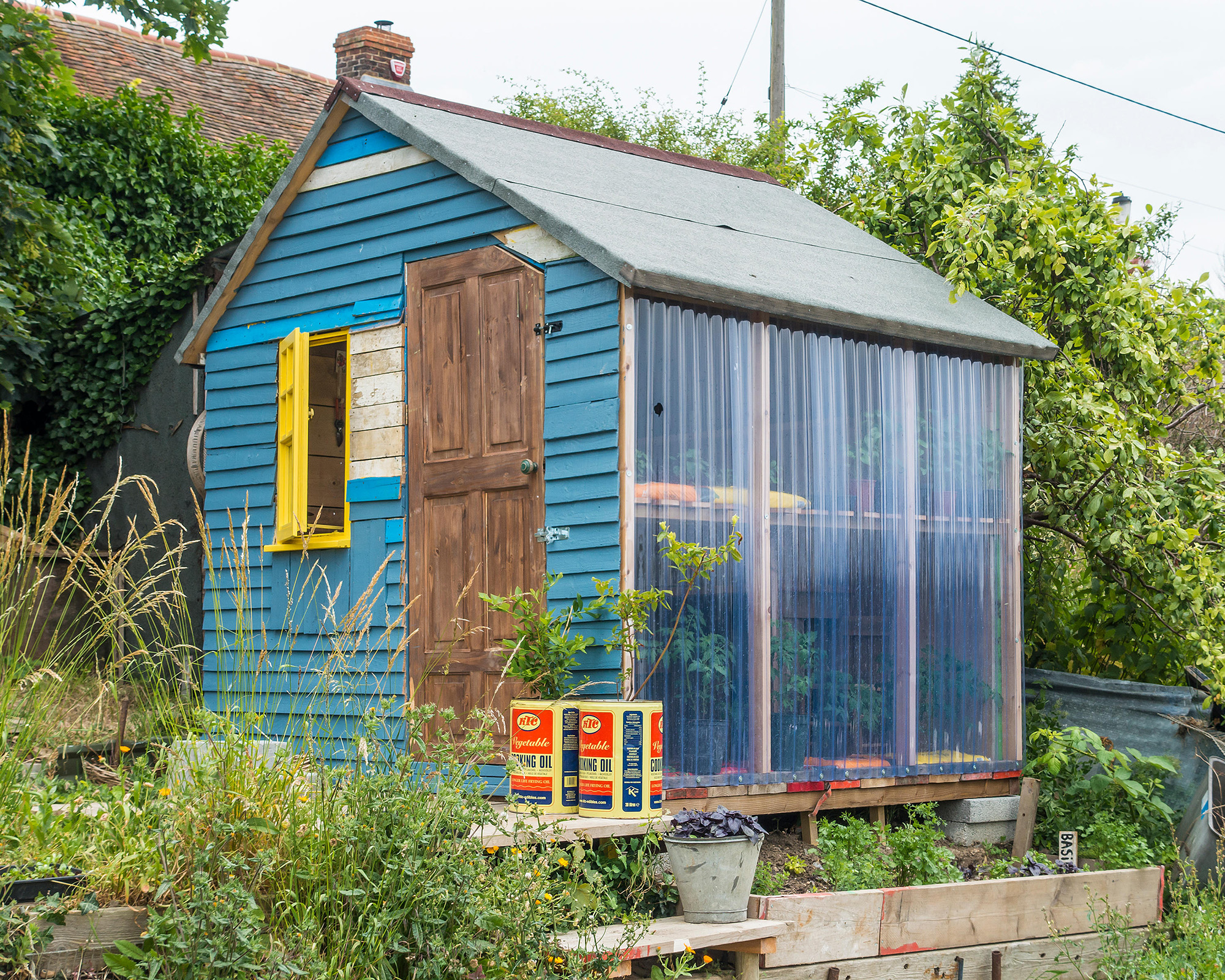
An existing shed can be converted into a DIY greenhouse
Do you own a shed that’s seen better days? Well don’t despair, there are plenty of simple ways to turn it into the grow space you’ve always longed for. A broken window, rotting timber panel or even a missing side can all provide the perfect opportunity for a major rethink.
When it comes to how to choose a greenhouse design for your plot, a good tip is to consider how you want to use your finished space and the direction the structure faces. Can the missing panel or side of the structure be replaced with clear plastic sheeting or corrugated clear roofing to let light flood in and help retain heat too?
Easily available from DIY stores and builder merchants for very little, they are ideal for covering large areas and by using the existing timber braces or adding new ones they can prove surprisingly rigid too.
2. Repurpose reclaimed windows
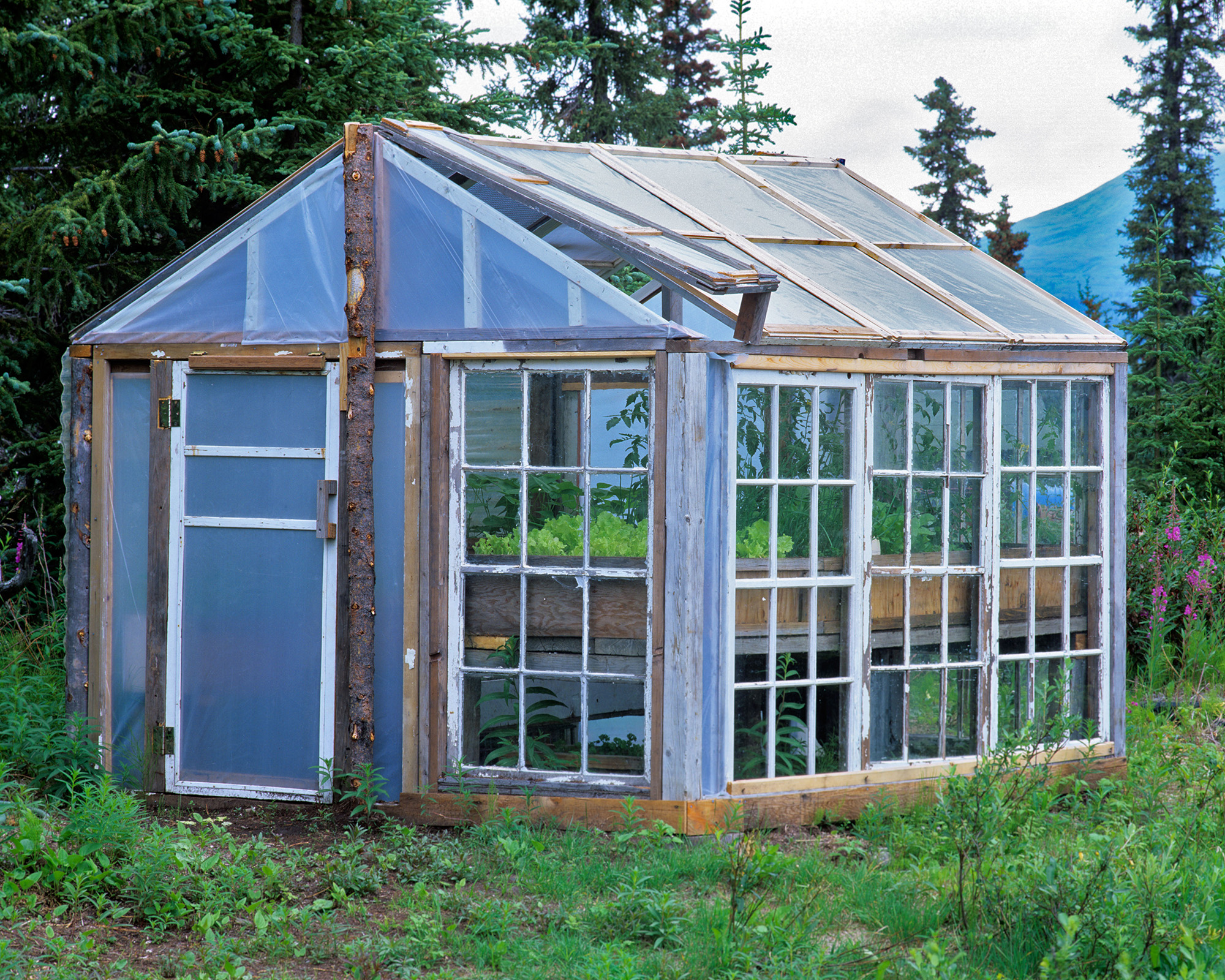
Salvaged windows make excellent materials for creating greenhouses
The most ornate and expensive greenhouse designs are essentially sturdy metal or wooden frameworks infilled with glass. For a more budget-friendly solution, you can create the same sort of structure from reclaimed doors and windows. Once pieced together, these materials can create stunning and highly practical DIY greenhouses. A great way to repurpose waste materials, that often come with bags of individual character and charm, they can be pretty quick to assemble once the initial design has been firmed up.
Builder’s skips and glaziers are well worth talking too as many will be pleased to free up storage and skip space by giving away old windows, but reclamation and salvage yards can also be good hunting grounds for free garden ideas – especially if you are looking for standout features for extra impact, think fanlights and stained-glass panels.
Take time to work out the best placement of each window. The easiest way to fit them is to create a simple but robust wooden frame for each elevation and screw them in before raising the completed structure.
3. Build a simple A-frame greenhouse
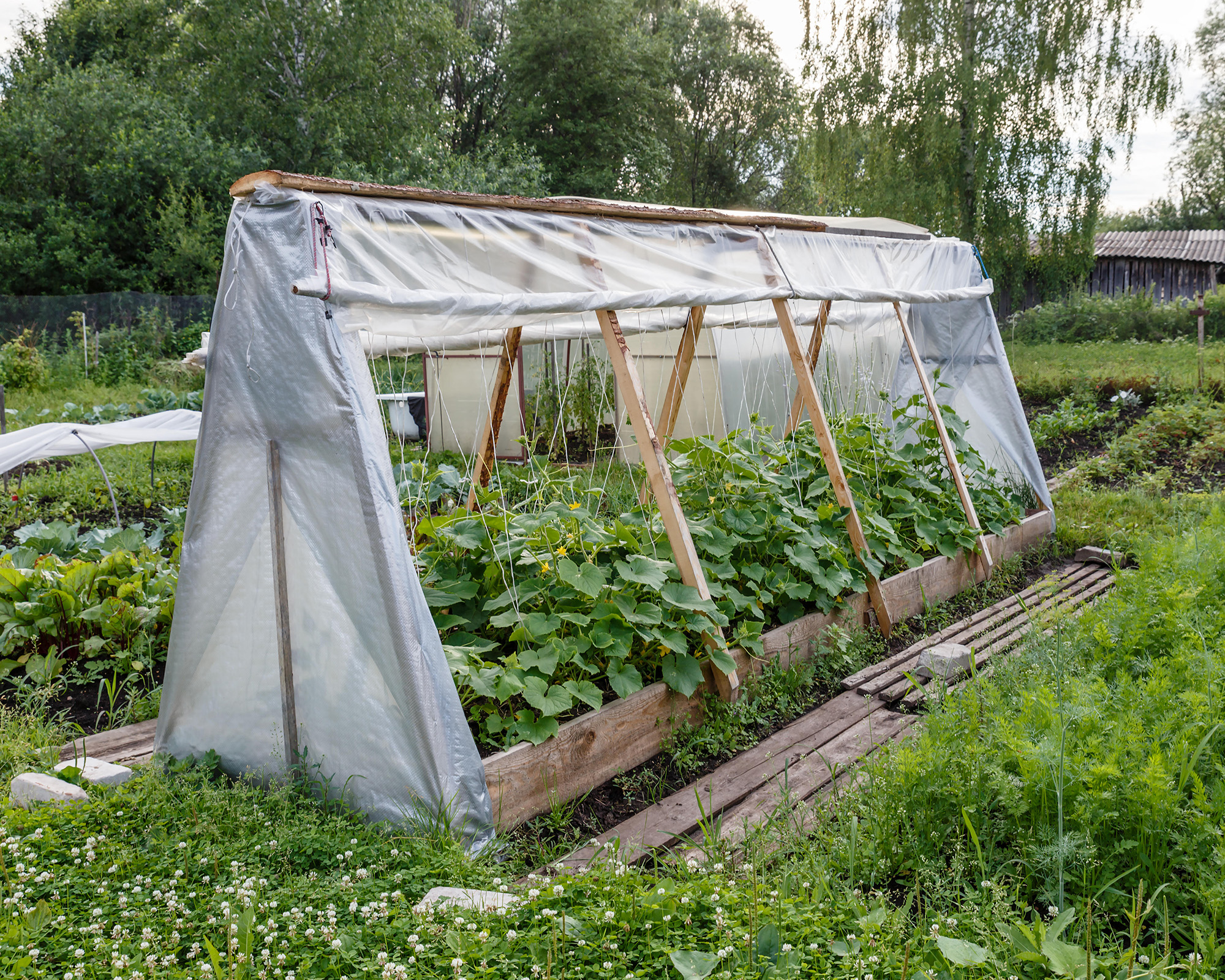
Raised timber forms the foundation for a simple greenhouse design
If you have a small garden and space is tight or you are looking to protect a specific row of crops, then a timber A-frame is a really quick and easy solution. Ok, it’s rustic rather than beautiful to look at, but it will do make jobs like growing flowers from seed easier to achieve for very little outlay.
Start by adding a raised timber edge to the planting area - or use an existing raised garden bed if you have one – timber deck or scaffolding boards work well – then screw pairs of timber braces into the raised sides, at either end and at 3ft intervals along the sides.
Position these so they slant in at a 45 degree angle, to form a series of open topped As. Fix a final timber batten across the top to increase stability, before covering with a sheet of clear plastic sheeting.
Keep the side coverings loose for easy access and to improve ventilation when needed but weigh down the ends to stop them flapping around by wrapping the edge of the plastic around a bamboo cane.
4. Construct your own polytunnel
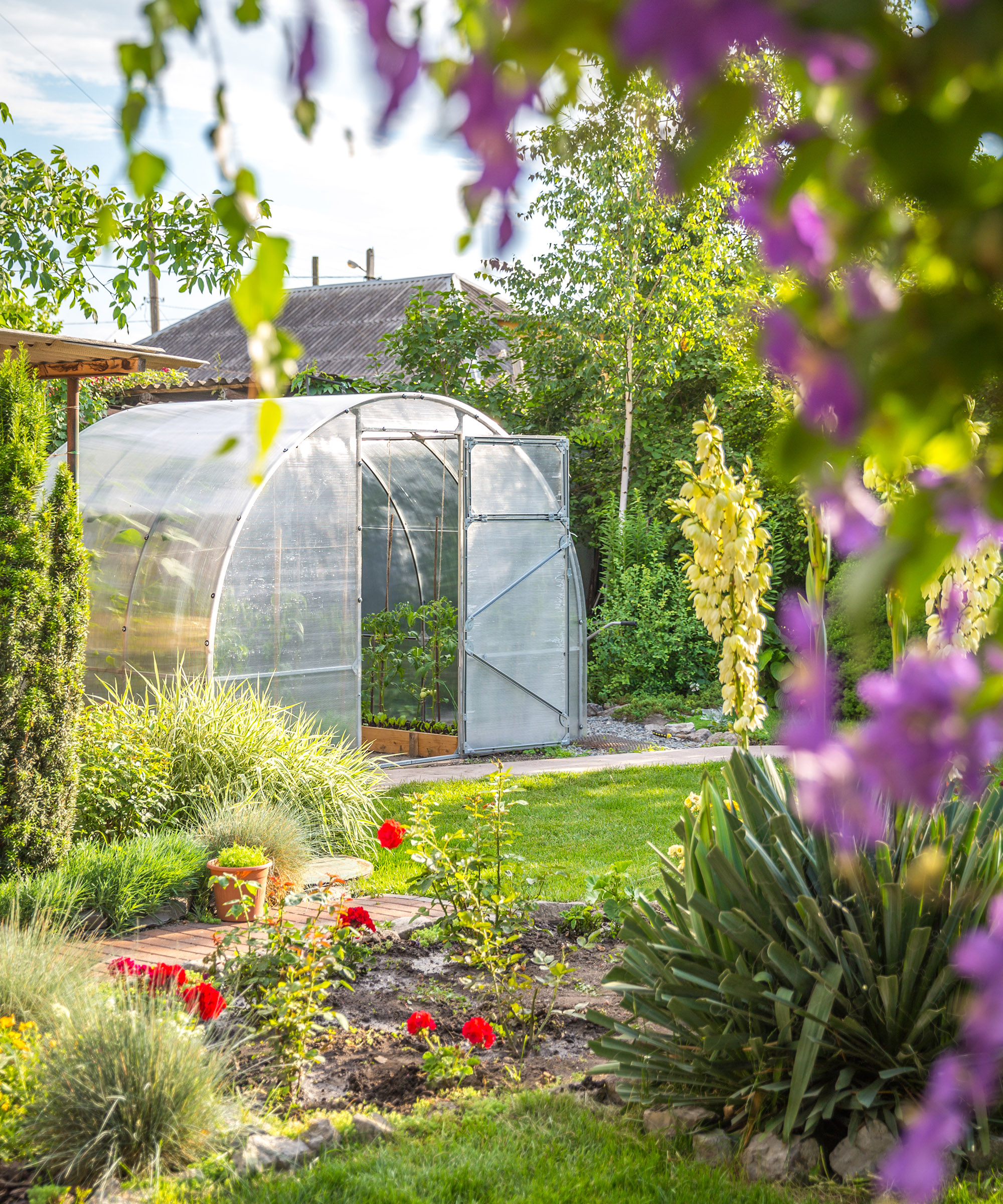
Polytunnels are widely available and make a good greenhouse alternative
If you fancy a simple, roomy grow space rather than an ornate glass house, opt for a polytunnel. Quick and simple to erect it’s easy to find a size that will fit your plot and they tend to be much cheaper than greenhouses too. Widely available they offer good levels of light and heat retention, so you can enjoy crops and blooms up to six weeks earlier than those grown outside and continue growing through the winter.
Measuring from 10ft wide with plenty of headroom, you can configure the large, uninterrupted internal space just as you need. Add waist-high benches down one or both sides to be used as greenhouse shelving and you'll have the perfect space for sowing seeds and tending seedlings, plus they'll also help you keep tools and trays in order.
Alternatively try a mix of planting beds and raised beds if positioning directly on the soil or grow bags and deep containers if on a concrete base.
5. Create insulating walls from plastic bottles
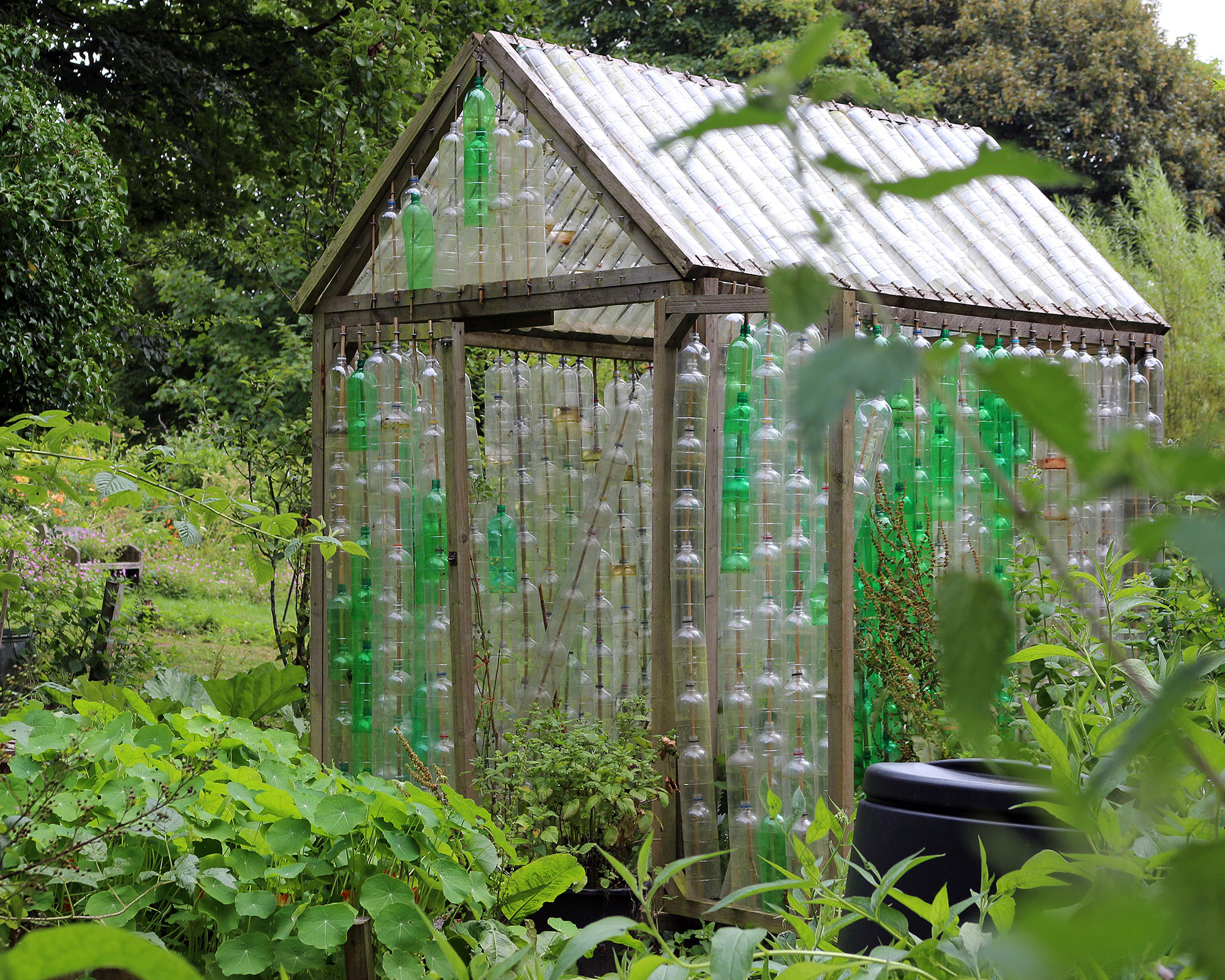
Give plastic bottles a second life as a DIY greenhouse
Ingenious and beautiful, there’s no denying recycled plastic soda bottles can make fantastic DIY greenhouses. Rigid and waterproof, they not only let light through, but their hollow forms provide some insulation too, an essential consideration when finalizing your ideas for what to plant in a greenhouse.
The trick is to cut the base off each two liter bottle and remove the lid before slotting them one on top of each other to make a long tube. Slide a bamboo cane the height of your walls or roof through the middle of each ‘tube’ before fixing to a basic timber batten frame.
6. Stretch plastic sheeting over a rigid frame
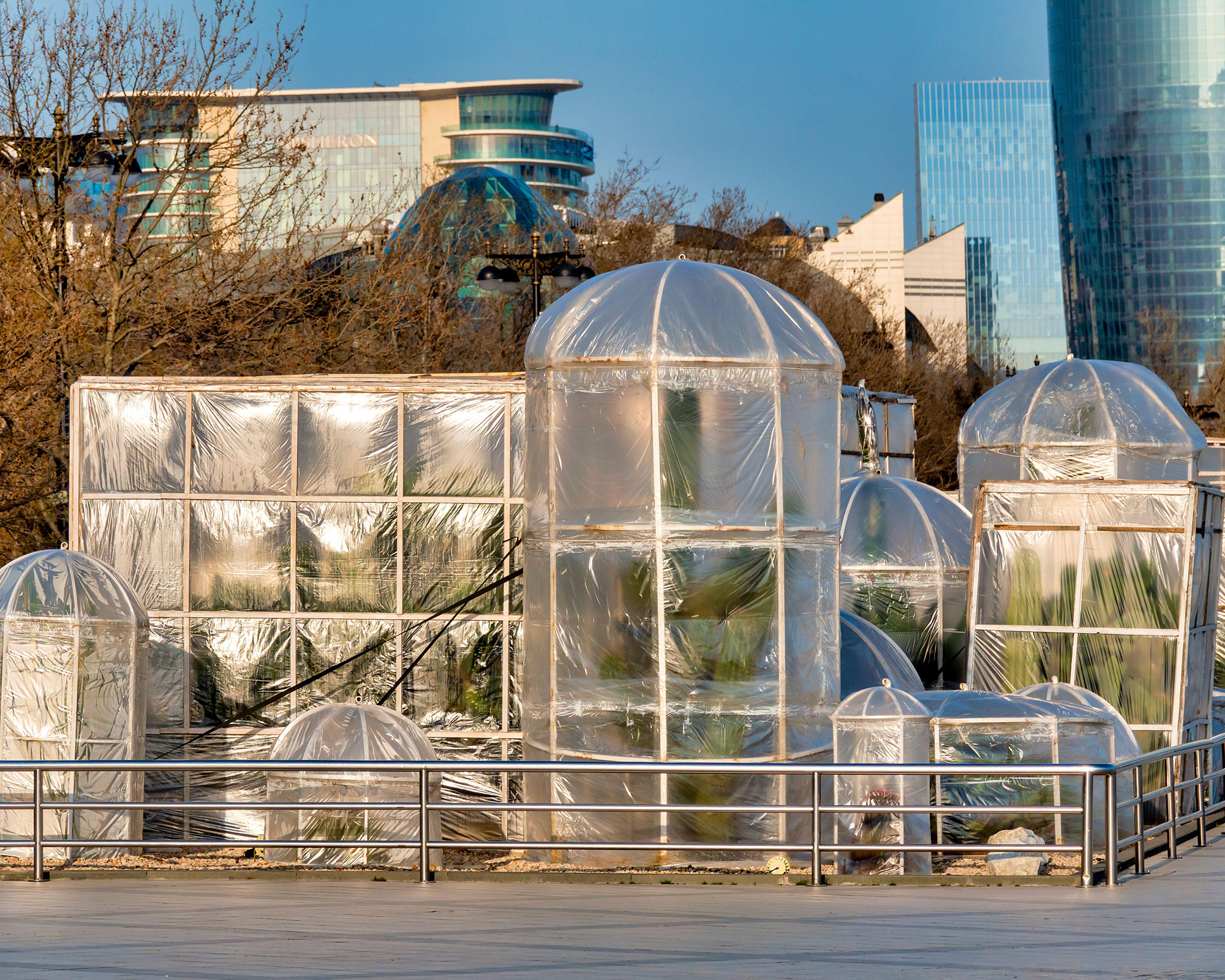
Plastic sheeting is a brilliant option for DIY greenhouse designs
If you want to protect tender tropical plants - such as a banana or canna, or create a lift-off rather than walk-in shelter, then plastic sheeting is a brilliant option. Stretched over a rigid frame and anchored to the ground either with pegs or bricks placed around the base, you can create a neat and very effective shelter for minimal cost. There are endless ways to form the framework.
Lashing bent over pea sticks or willow wands is pretty simple, therapeutic and allows you to adapt the shape and size to accommodate your plant. Alternatively use a pre-made frame – basic wire hanging baskets can be useful for smaller plants or consider raising them up on bamboo canes to make a taller obelisk, before covering. Clothes airers, fruit cages and simple tepee structures all work well.
7. Replace timber shed slats with clear plastic
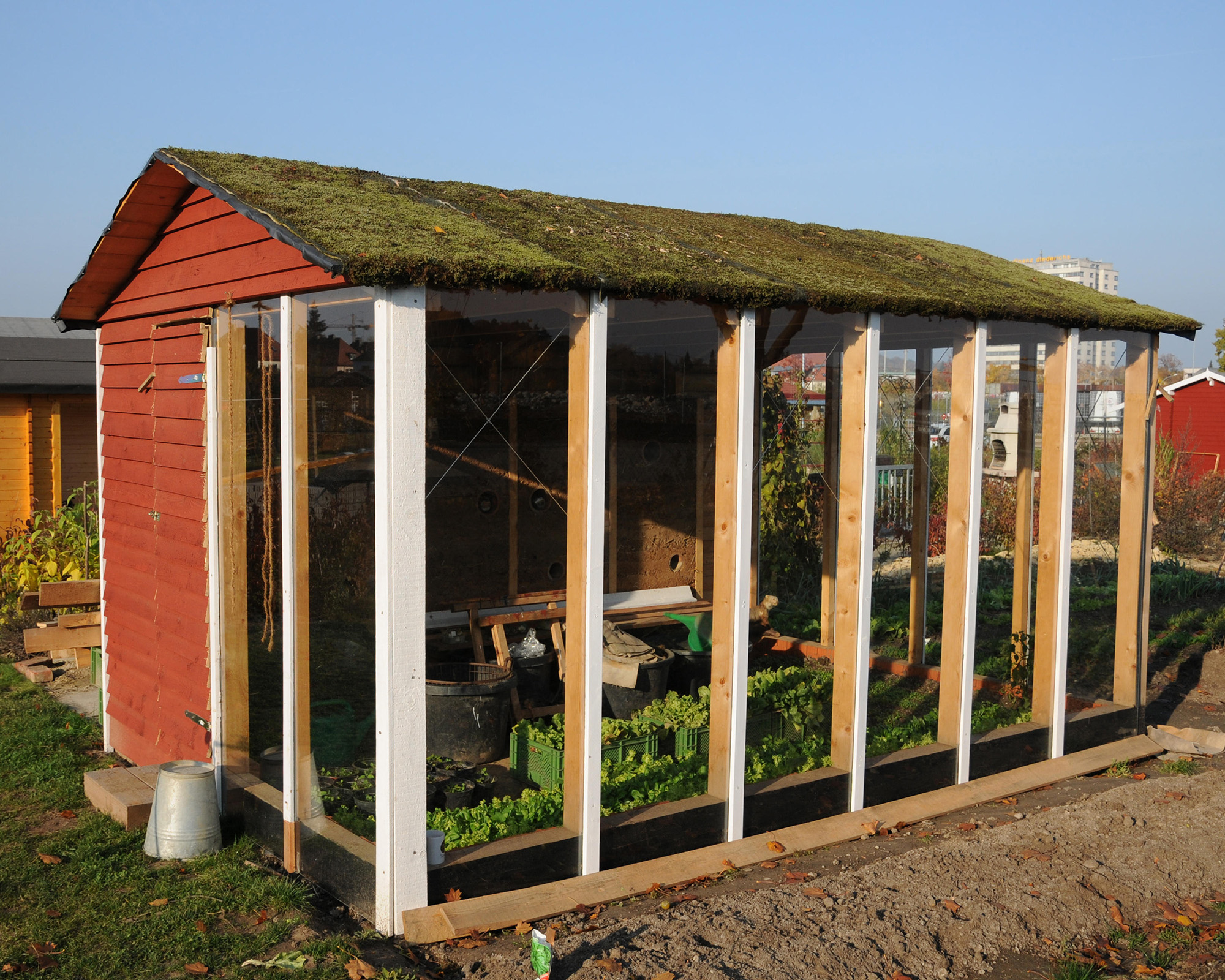
A clear wall added into the side of a shed works as a self-made greenhouse
Modifying an existing shed or summer house idea may seem radical but is a great way to gain a flexible growing space that’s also a pleasure to spend time in.
As long as the main supporting structure of the building is sound you can remove the outer timber cladding and infill the gaps between supports with clear acrylic sheet, polycarbonate or even glass.
Thicknesses do vary and will impact on cost, as well as rigidity, but can help completely transform what was a dark and dingy area into a practical space that allows you to follow a greenhouse growing calendar all year long.
8. Cover a frame with bubble wrap
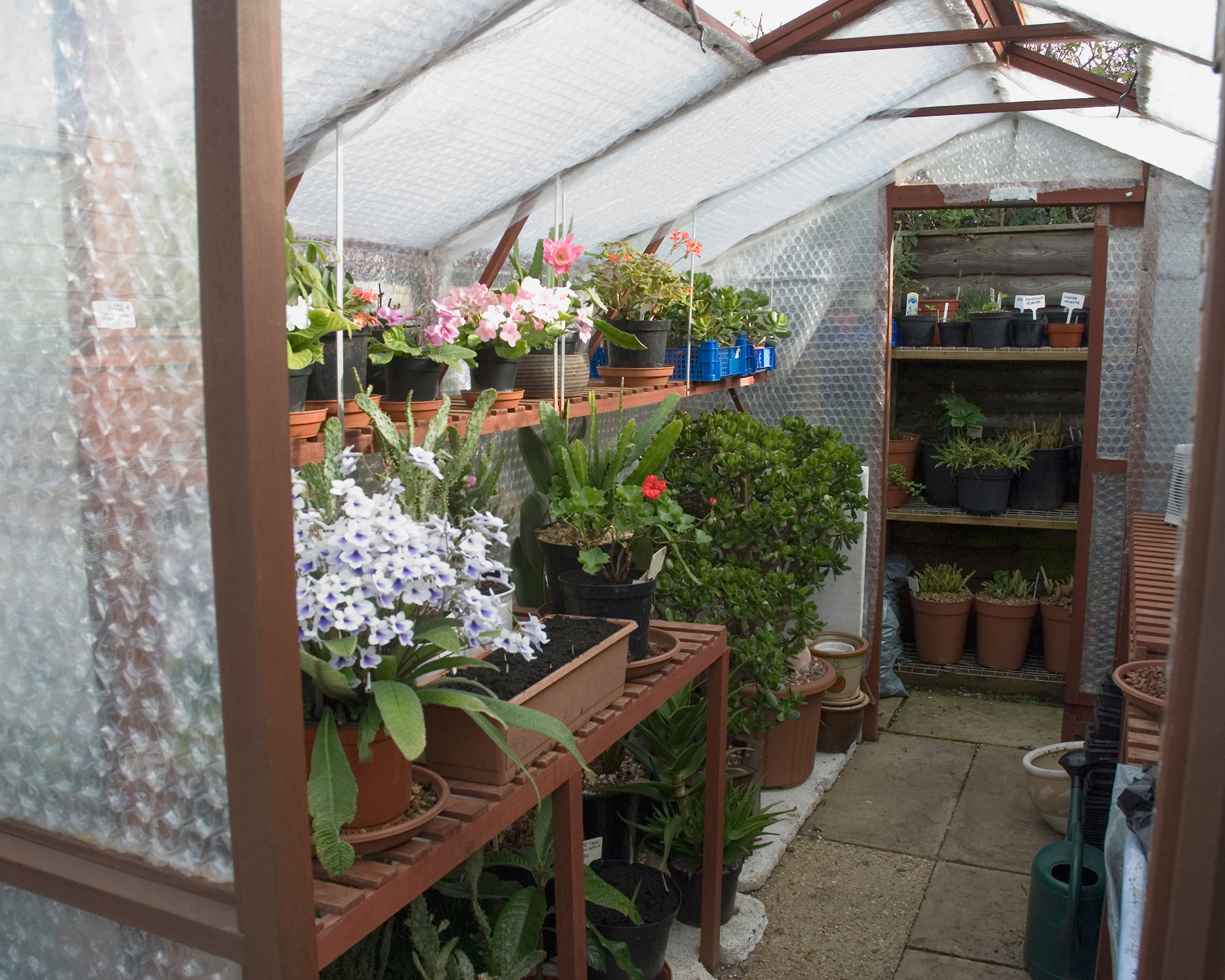
Bubblewrap is an inexpensive material for a greenhouse design
Redundant and secondhand greenhouse frames are often up for grabs, and although they may be minus the glass, or have some panes missing they can still be extremely useful. Whether wooden or aluminium, a sound and sturdy frame can usually be pretty quickly taken apart and transported to its new home in your kitchen garden.
Add a new, taut covering of inexpensive bubble wrap and it can make a super cozy and very practical growing room. Widely available online, bubble wrap lets light through plus the air pockets retain heat and help keep frost at bay.
Roll out, pull taut and staple on to a wooden frame, cutting the roll to size as you go or, alternatively use ‘w’ shaped greenhouse clips from Amazon to fix the sheeting into an aluminium framework.
9. Transform a fence panel into a greenhouse
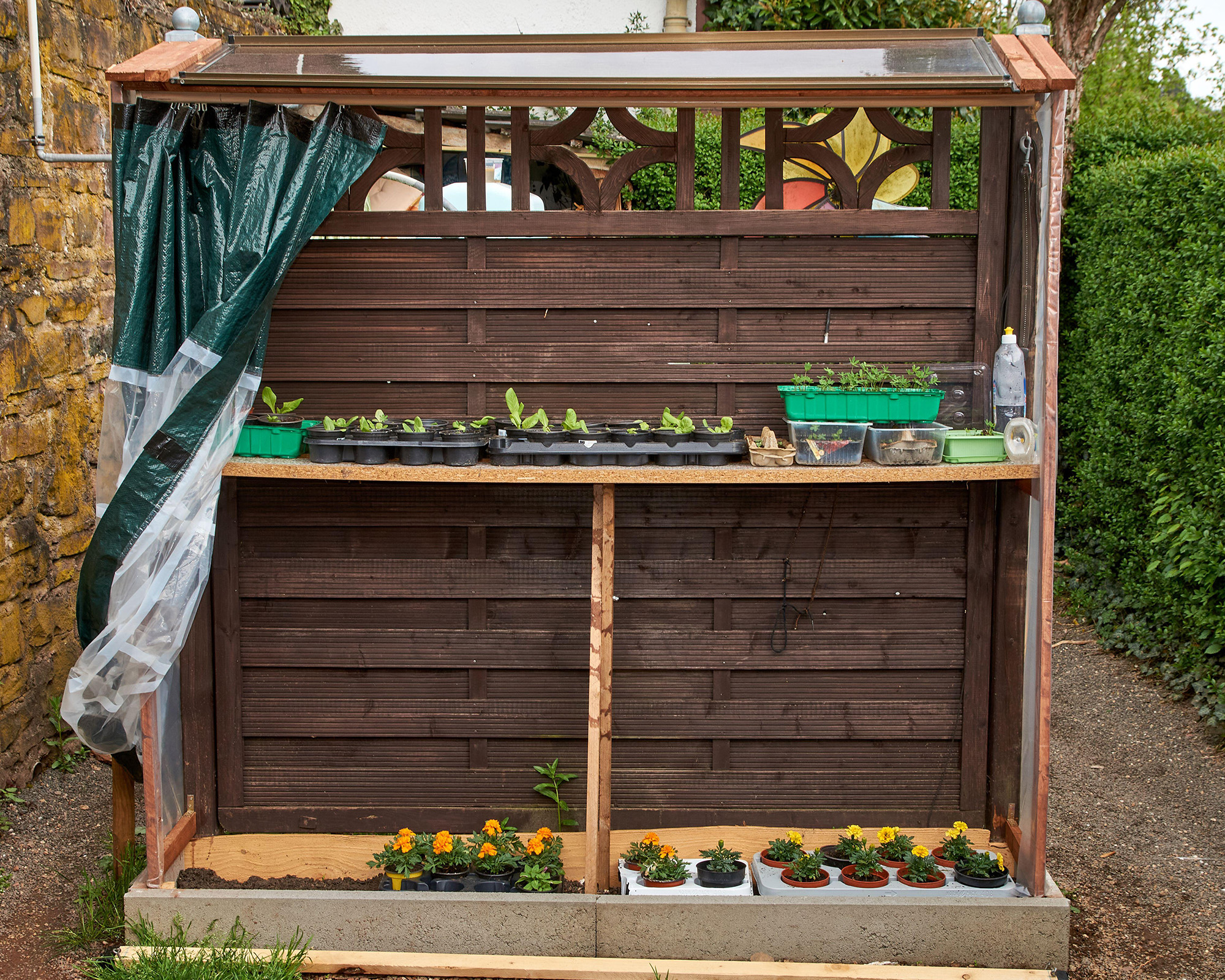
Spare fence panel? Why not give a new life as a greenhouse
Don’t throw away an unwanted garden fence or timber posts, instead put them to good use and construct a simple greenhouse. It doesn’t have to be a permanent garden feature, a temporary grow space to raise spring and early summer seedlings can prove invaluable and even better if it’s made for free. Choose a sunny spot and erect the fence panel facing the sun.
Use this as the back of the structure and add sides made from timber battens covered with clear plastic sheeting. Screw in wooden cross battens to support the ends of as many shelves as you need. You may need to add central vertical supports too, to reinforce shelves and stop them from sagging. Keep the heat in by attaching a clear or partially clear plastic shower curtain to the front and using a glazed panel – door or window - as a roof.
10. Try a pop-up greenhouse
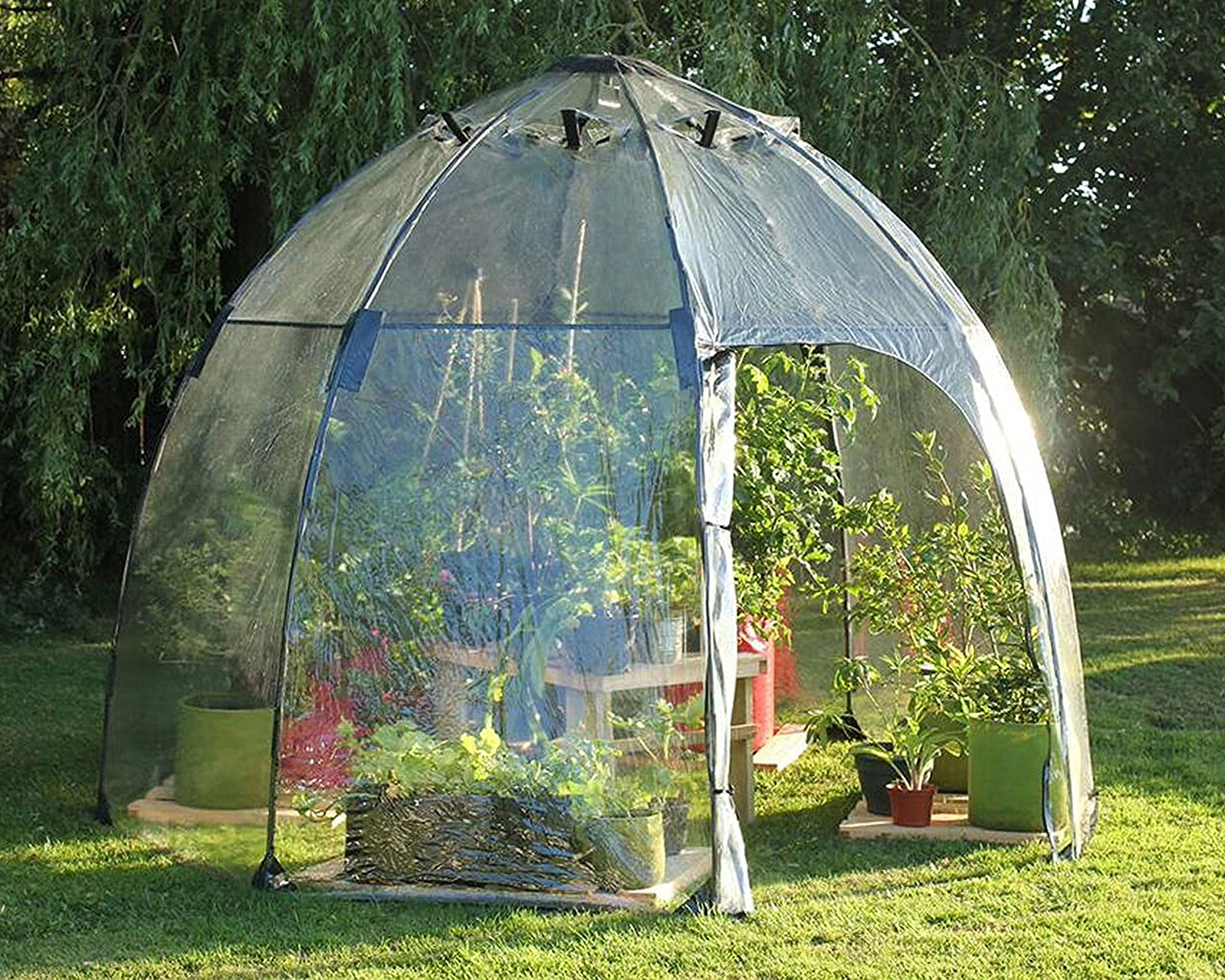
Good sized greenhouses don’t have to be permanent or costly features. Some of the best mini greenhouses borrow their design principals from one-man festival tents and are designed to be portable. Perfect if you wish to concentrate solely on raising early spring or winter vegetables, are renting a property or in the process of a complete plot redesign.
These dome-shaped structures comprise of flexible fibreglass rods that slot easily into channels in the clear plastic covering, to create the curved shape in minutes. They can also be quickly dismantled and packed away, taking up very little space in your garden storage too.
Simply peg the structure into the ground, or weight the base down with sandbags or stones if on a paved surface and then start setting up your inside grow space. Openings at the top or sides help with ventilation and controlling the inside temperature.
11. Build a Geodesic greenhouse

Try your hand at a spot of Geodome building. A simple case of fixing these ingenious five-point fittings to timber poles, you can erect endless dome like structures in as little as 20 minutes if you are super organized.
'It's nice to think of it as a very relaxed weekend project,' says the expert team at The Hubs. 'With regular wood such as batten from a DIY store it should take about an hour to cut all your wood (remember there are only 2 different lengths, so you can cut multiple lengths at once); about an hour to paint the wood (or much less if you oil them); about an hour to screw all the balls on; and an hour to put the dome up. If you want to make a raised base, then this will add extra time.'
By altering the length of the timber struts and the number of hubs you use, it’s possible to create simple domes, igloos and even a series of interconnecting domes – perfect for a truly modern DIY greenhouse with a difference.
These rigid and freestanding structures can be covered with clear polythene sheeting – 3 micron 1200 gauge is the most durable and will last for 10 years. Either drape and secure over the completed structure or cut each triangular section to size for a neat, futuristic look.
12. Use reclaimed doors for a simple plant shelter
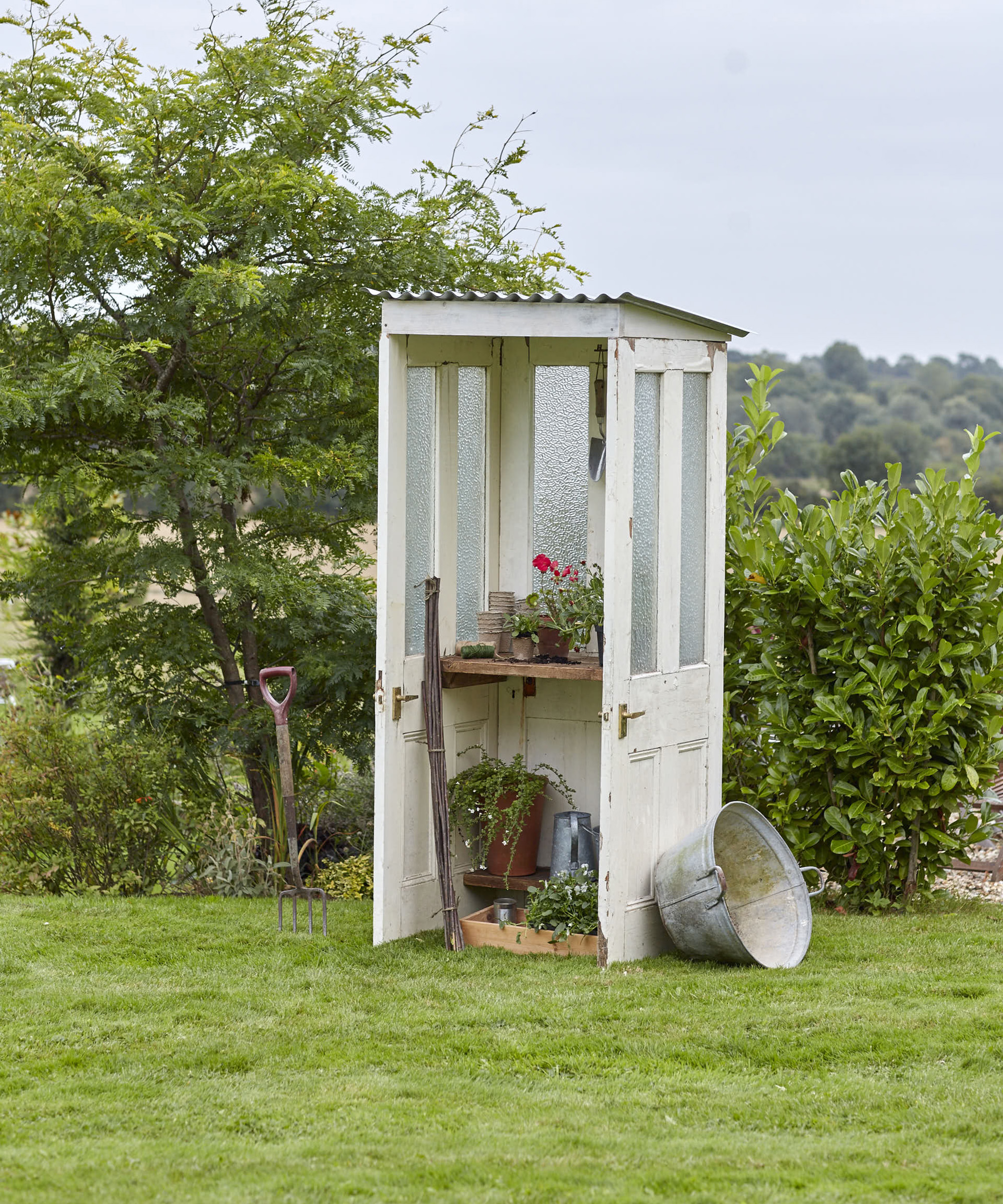
DIY greenhouse idea taken from book Upcycling Outdoors by Max McMurdo, published by Jacqui Small, and available from Amazon
This simple DIY greenhouse using three glazed doors, a simple shelf and wrinkly tin roof is the brainchild of upcycling master Max McMurdo – and we love it for all its quirky charm. 'This was created specifically for people with limited outdoor space – you could very easily carry each component through your house and into your courtyard garden where it could be assembled,' says Max.
Doubling as a handy greenhouse or potting shed it’s the perfect spot for growing on a few prize plants. 'One of the most interesting aspects of garden design for me is that residents tend to be braver with their garden than they are indoors. We do tend to play it safe in our houses, perhaps worried that creating a look that’s too personal and niche will have an adverse effect on resale value. However, when it comes to our gardens we don’t seem to be so constrained,' he adds.
13. Customize your greenhouse
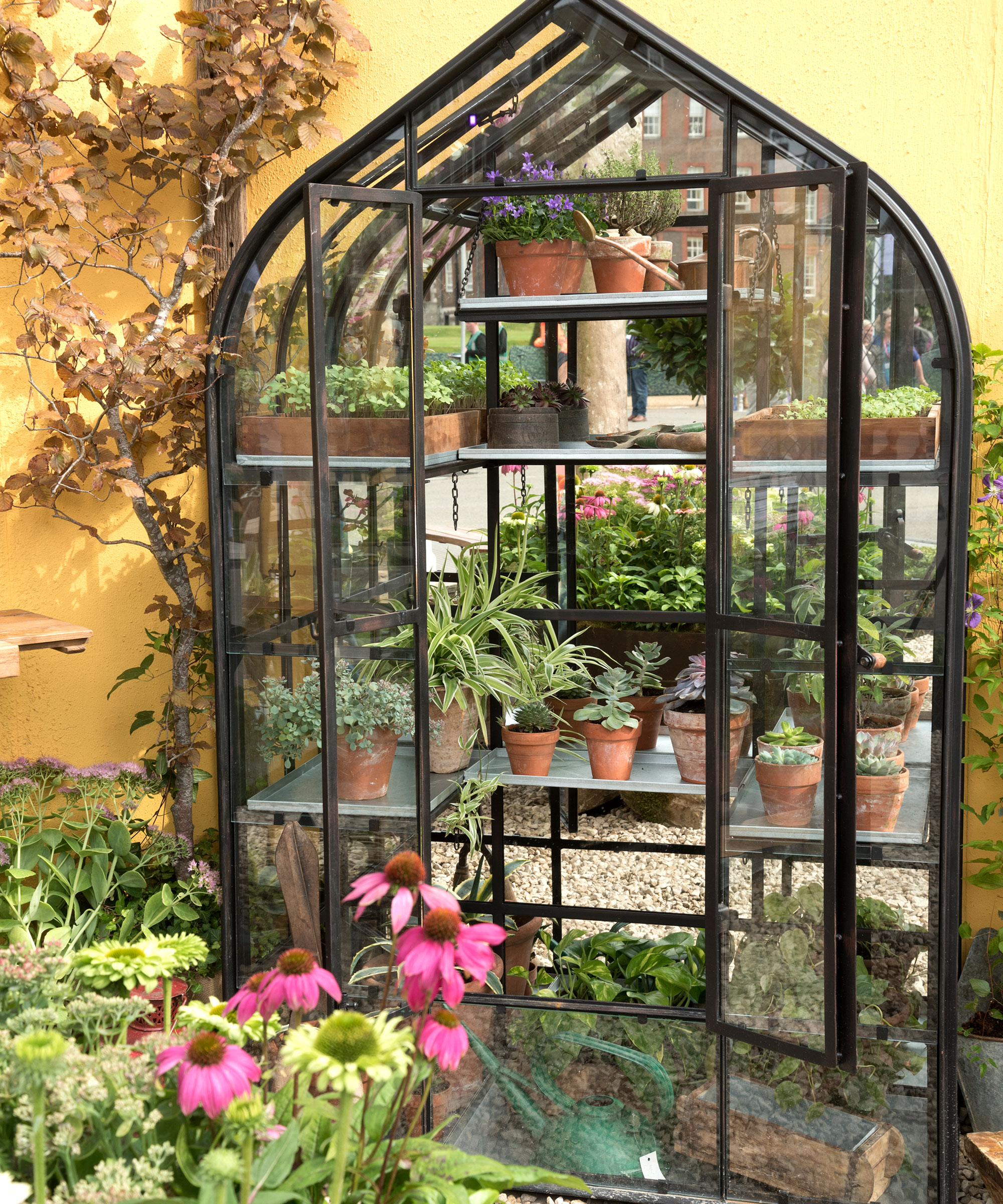
Adding a mirror to your greenhouse can create a more decorative effect
Sprucing up an existing greenhouse and adapting it to suit your garden design ideas and growing needs is all part of the fun. A chance to add personality to your outside space, it can easily become a stunning feature and talking point to be proud of.
Painting a greenhouse’s wooden frame is perhaps the easiest way to make a noticeable change. With the best exterior wood paint available in infinite shades, you can choose from pretty pastel shades – perfect for softer, rural charm – or bold, deep tones for a more contemporary finish.
Incorporating some garden mirror ideas in a lean-to design makes a truly elegant statement. Go for mirrored glass or lighter and more affordable mirrored acrylic. They will double the impact of any prize plants you choose to display and help raise light levels, great for raising seedlings.
14. Erect a lean-to design
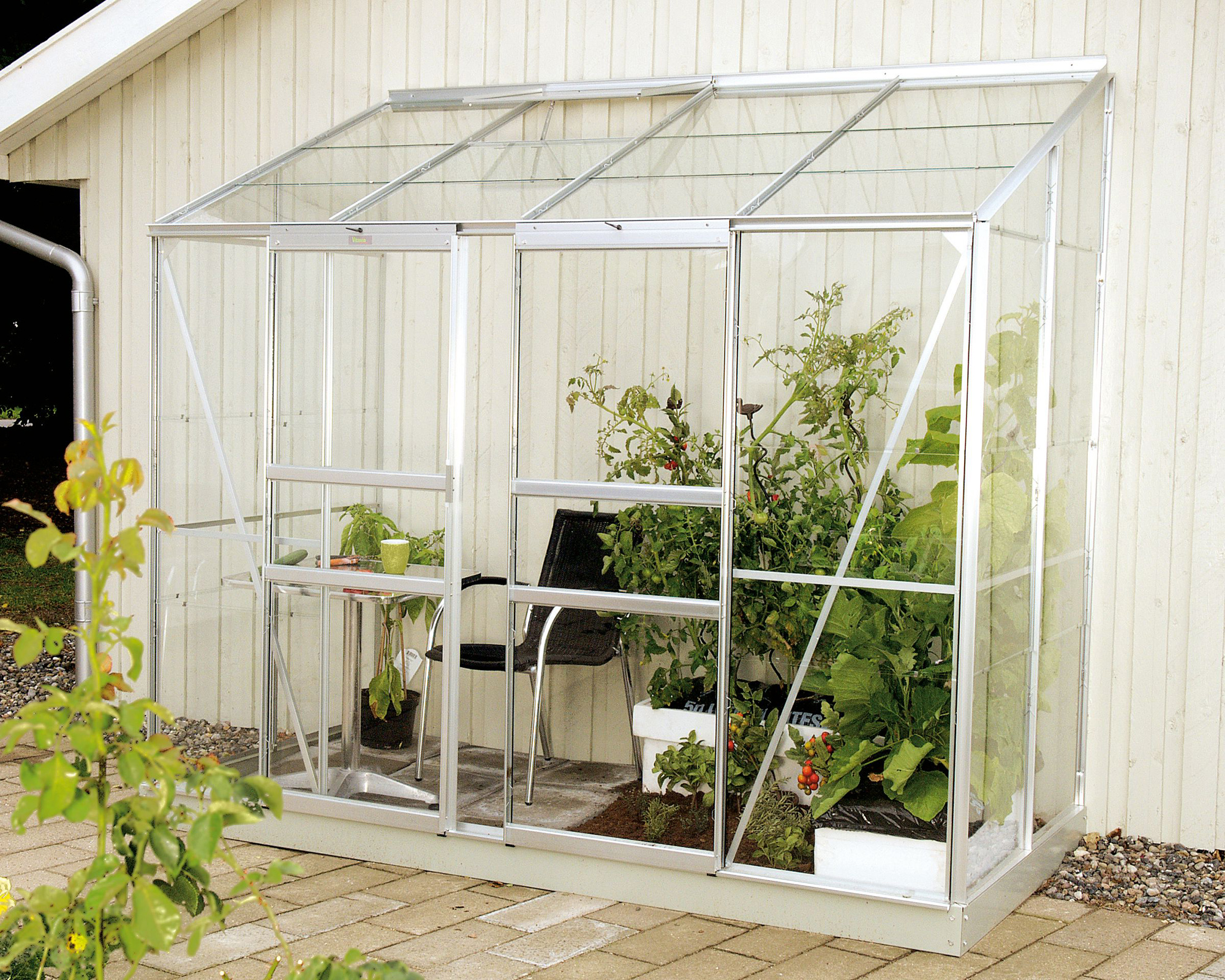
One of the best types of greenhouse for a small plot, a lean-to design is great for making good use of awkward spaces. From simple plastic covered wooden frames propped up against a wall to off-the-peg self-assembly designs, there are plenty of reasons to opt for these slimline greenhouses.
The team at Wickesshares these design tips for you to consider when planning a lean-to DIY greenhouse:
- It’s best to go for the biggest size you can accommodate.
- The taller the eaves, the better the light distribution is, so aim for a height of at least 5ft.
- Be sure to allow enough headroom so you can stand and move around comfortably.
- Double sliding doors are both space saving and very practical for moving large plants in and out of the greenhouse.
Is it cheaper to build your own DIY greenhouse?
Generally speaking, yes – constructing your own greenhouse from found and basic materials – such as timber and 1200 gauge polythene sheeting – can be hugely cost effective but does take time and patience.
Many DIY greenhouse designs can be bought online and provide a good basic format that can be easily adapted, ideal if you are a competent DIYer but need a little guidance.
If you're looking for cheap garden ideas, simple construction kits – such as polytunnels, pop-up sun bubbles and geodesic domes cost a few hundred dollars to buy but are much quicker to erect and still a fraction of the cost of an off-the-peg glass greenhouse.
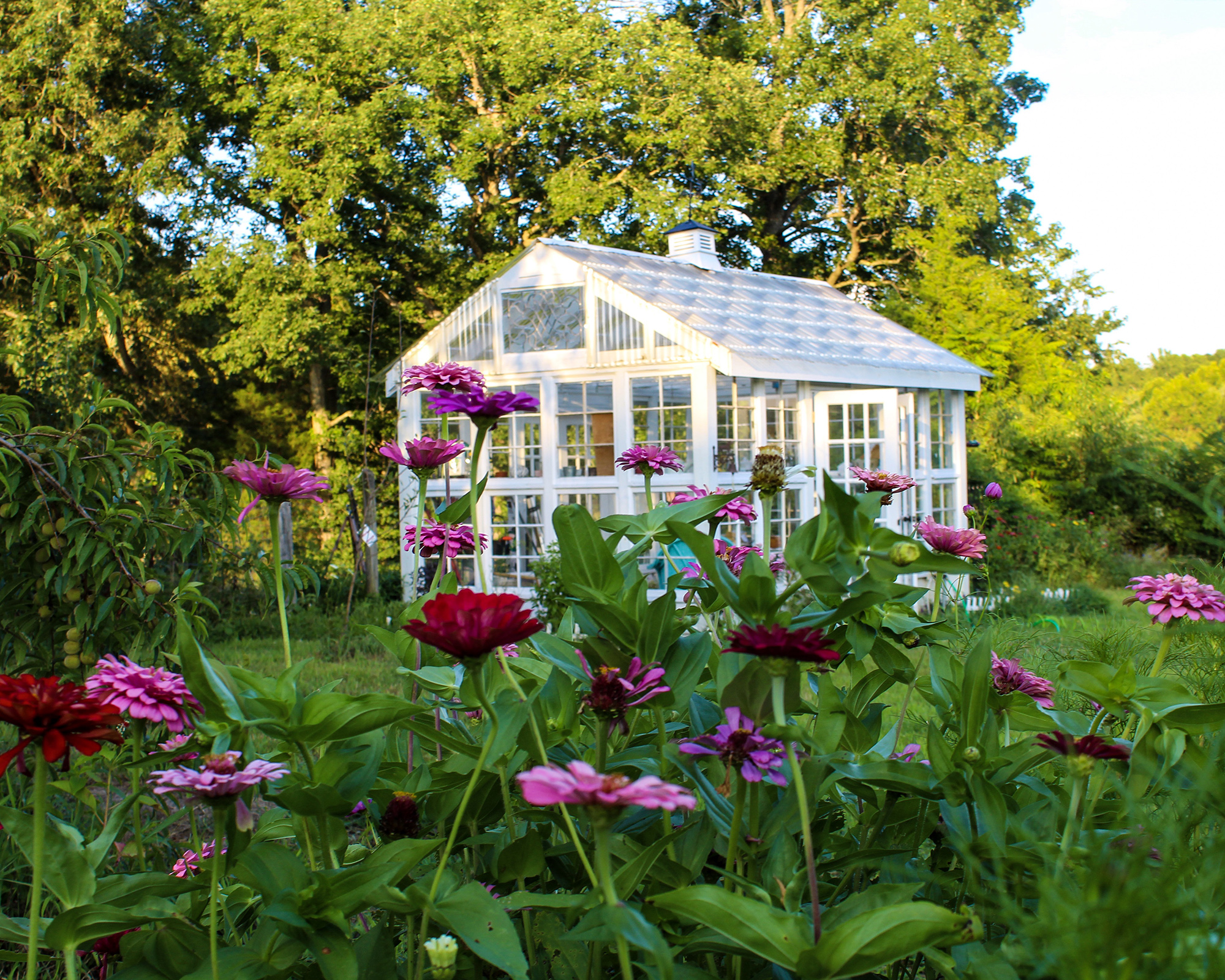
Even traditional greenhouse designs can be created using reclaimed materials such as windows
What is the best material for building a DIY greenhouse?
Any material that lets light through and retains warmth has to be a winner. Polycarbonate sheets are rigid and clear and their twin-walled structure traps air between the narrow outer layers, keeping the inside air temperature a few degrees higher than outside.
Other insulating options include Polyvinyl plastic. It's tougher than regular Polyethylene sheeting – it will last twice as long, up to five years – and is still flexible and easy to clean. Look for different gauges (or thicknesses) as this will impact on how durable the material is and how well it will stand up to the elements.
You may also want to consider other supplementary options for how to heat a greenhouse to keep your DIY design warm in the depths of winter.
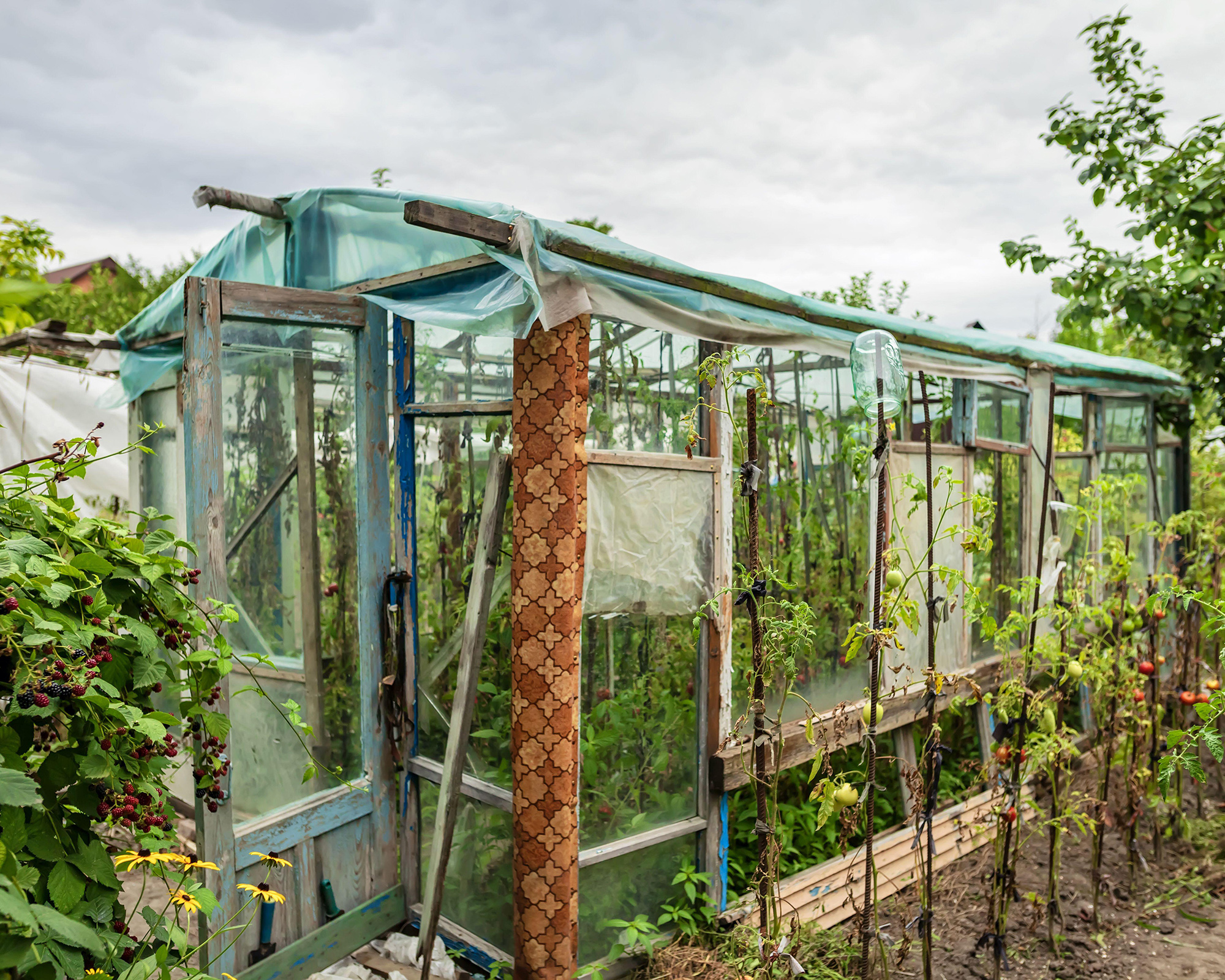
Most greenhouse construction will require basic DIY skills
Can I build a greenhouse myself?
Building your own greenhouse can take time but is a hugely satisfying project. Whether it’s erecting a ready-made product, following someone else’s DIY glasshouse plans or devising your own build from scratch, you will end up with a super useful grow space that you can be proud of.
Most builds require basic DIY skills and tools, and you are likely to need an extra pair of hands at times too. Set about by working out the exact size of your greenhouse, decide on the position and ensure the site is level. If building from scratch, try and have all the materials you need to hand before work begins and take your time.

Jill puts her love of plants and all things garden related down to the hours spent pottering around with her Nan and Grandad when she was little. Today she is lucky enough to have a garden of her own in Surrey, England, and spends much of her time writing about them too.
